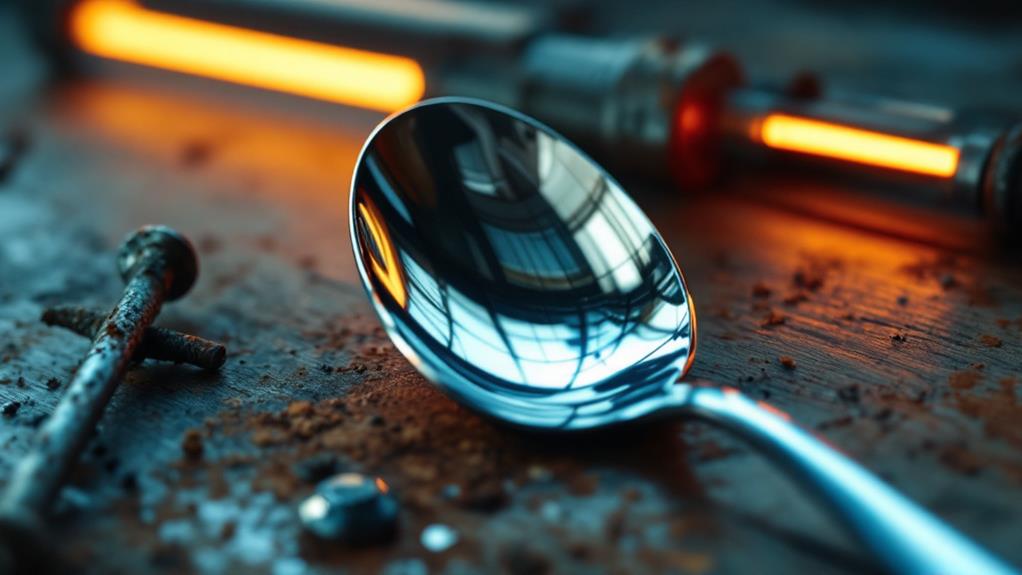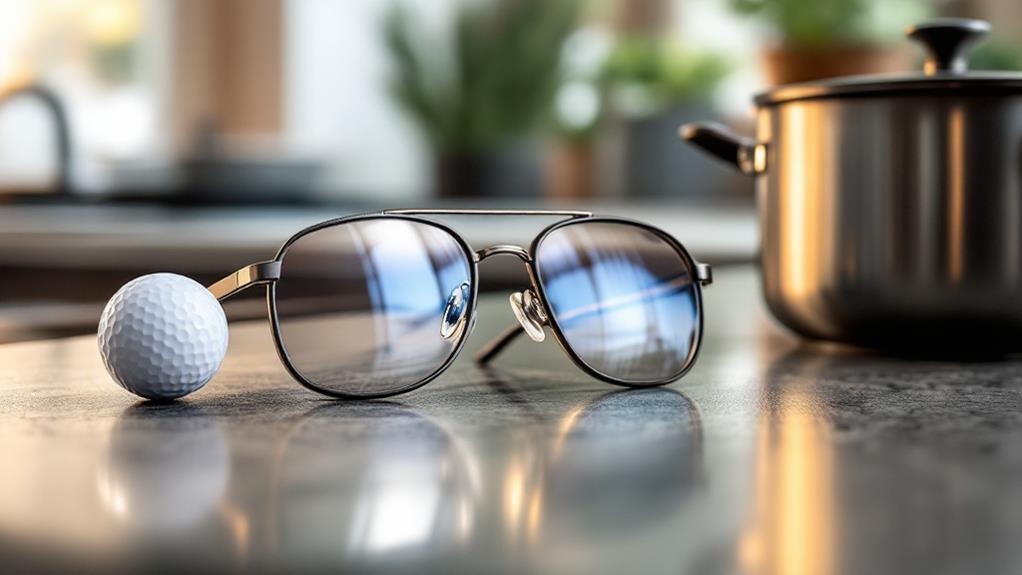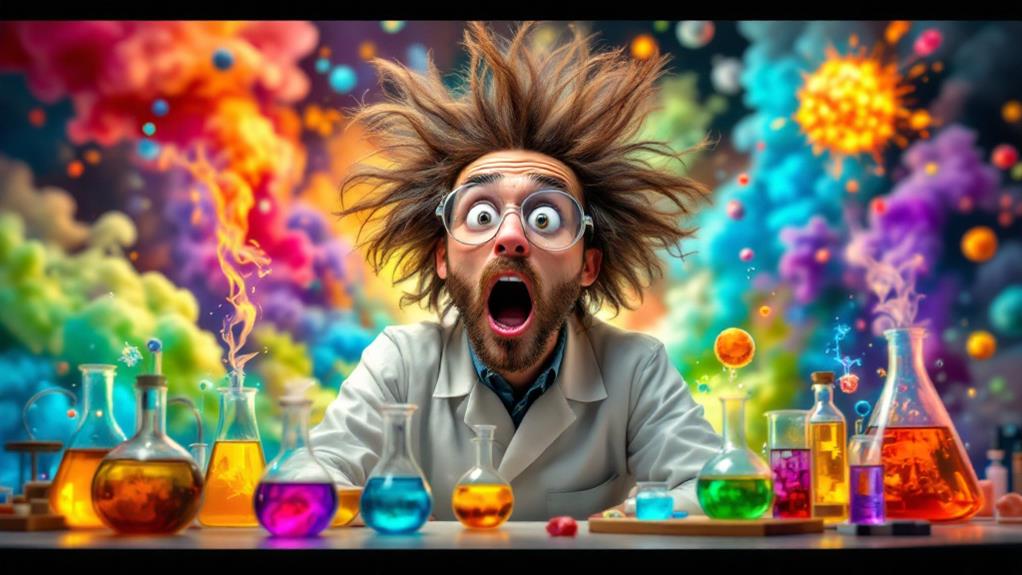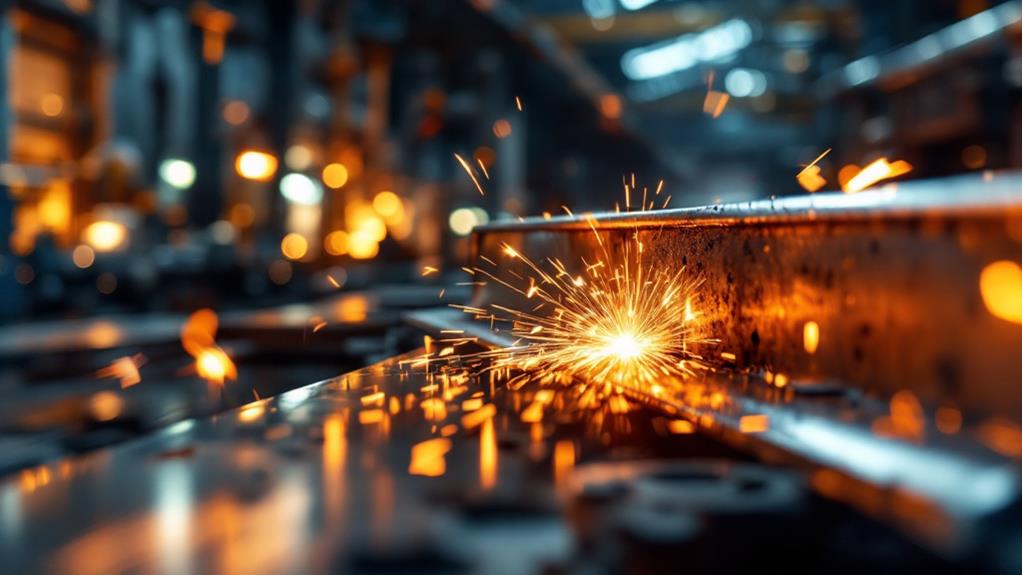Surprising Uses of Common Elements: Everyday Items You Didn’t Know Were Elemental

You're surrounded by elements hiding in plain sight. Your smartphone contains a pinch of gold for conductivity, while your smoke detector uses radioactive americium-241 to keep you safe. Those brilliant neon signs? They're filled with noble gases that light up when electricity passes through. Lithium-ion batteries power your devices, thanks to lithium's unique properties. Even titanium plays a role in your daily life, from sunscreen to non-stick cookware. These common elements have surprising applications that make modern life possible. Plunge deeper, and you'll uncover a world of elemental wonders in the most unexpected places.
Gold in Your Smartphone
Your smartphone harbors a hidden treasure: gold. While you might not see it, this precious metal plays an essential role in your device's functionality. Gold's excellent conductivity and resistance to corrosion make it ideal for electronic components. You'll find it in the connectors, circuit boards, and even the battery contacts of your phone.
Manufacturers use gold plating on various parts to guarantee reliable connections and prevent oxidation. This thin layer of gold, often just a few microns thick, helps maintain signal quality and extends the life of your device. Gold nanoparticles are also used in some smartphone displays, enhancing their touch sensitivity and durability.
Don't expect to get rich from your old phone, though. The amount of gold in a single smartphone is tiny, typically less than a gram. However, when millions of devices are recycled, the gold recovered becomes significant. This urban mining of electronic waste is becoming an important source of gold and other precious metals. So, the next time you use your smartphone, remember that you're carrying a bit of gold in your pocket, albeit in a form you can't see or spend.
Radioactive Smoke Detectors
Contrary to popular belief, many smoke detectors rely on a tiny amount of radioactive material to function. These devices, known as ionization smoke detectors, contain a small amount of americium-241, a radioactive isotope that emits alpha particles. Don't worry, though – the amount is so minuscule that it poses no health risk to you or your family.
The americium-241 ionizes the air molecules in a chamber within the detector. When smoke enters this chamber, it disrupts the ionized air, triggering the alarm. This ingenious use of nuclear radiation allows for quick detection of fires, potentially saving lives and property.
While the presence of radioactive materials in your home might sound alarming, it's important to understand that you're exposed to more radiation from natural sources like cosmic rays and soil than from your smoke detector. The benefits far outweigh any perceived risks. In fact, the use of americium-241 in smoke detectors is one of the most common peaceful applications of radioactive isotopes in everyday life, demonstrating how nuclear technology can be utilized for safety and protection.
Neon Signs and Noble Gases

Moving from the hidden world of radioactive smoke detectors, let's illuminate another surprising use of elements. You've likely seen neon signs lighting up storefronts and bars, but did you know they're part of a larger family of noble gas-filled lights? These eye-catching displays aren't limited to neon; they often contain other noble gases like argon, krypton, and xenon.
When electricity passes through these gases, they become ionized, creating a glowing plasma that emits alluring colors. Each noble gas produces a unique hue: neon glows red-orange, argon blue, krypton whitish-violet, and xenon light blue. By combining different gases and using phosphor coatings, sign makers can create a rainbow of colors.
Noble gases aren't just for flashy signs, though. You'll find them in various lighting applications, from high-intensity discharge lamps to plasma displays. While plasma TVs have largely been replaced by liquid crystal displays (LCDs), noble gases still play a role in backlighting these screens. So, the next time you're enthralled by a colorful sign or watching your favorite show, remember the invisible noble gases working behind the scenes.
Lithium-Ion Batteries
From powering your smartphone to propelling electric vehicles, lithium-ion batteries have revolutionized portable energy storage. You'll find these incredible power sources in countless devices you use daily, from laptops to cordless tools. But have you ever wondered what makes them so special?
Lithium, the lightest metal on the periodic table, is the key player. Its unique properties allow it to pack a lot of energy into a small, lightweight package. When combined with other elements like cobalt, nickel, or manganese, it creates a rechargeable battery that outperforms traditional options.
What you might not know is that lithium-ion batteries also have surprising applications beyond consumer electronics. They're used in aerospace technology, medical devices, and even grid energy storage. Scientists are constantly working to improve their battery longevity and safety features, including developing fire retardant properties to reduce the risk of overheating.
As demand for efficient energy storage grows, you can expect to see lithium-ion technology continue to evolve and find new uses in unexpected places. It's a prime example of how a common element can have extraordinary impacts on our daily lives.
Titanium in Everyday Products

When you think of titanium, you might imagine high-tech aerospace applications or state-of-the-art medical implants. But this versatile element is more common in your daily life than you'd expect. While it's true that titanium is indispensable in aircraft frames and dental implants, it's also present in many everyday items you use.
You'll find titanium dioxide, a white pigment derived from titanium, in sunscreens, cosmetics, and even food products. It's what gives many toothpastes their bright white color and helps block harmful UV rays in sunscreens. Titanium's strength-to-weight ratio makes it ideal for sports equipment like golf clubs, tennis rackets, and bicycle frames. You might be wearing titanium right now if you have eyeglasses with titanium frames, known for their durability and flexibility.
In the kitchen, titanium coatings on cookware provide a non-stick surface that's resistant to scratches and corrosion. Even some paints and plastics contain titanium compounds for improved durability and color. So, while titanium may seem exotic, it's actually a common element enhancing many products you use every day.



